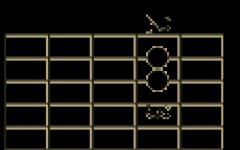Laboratory work on hygiene
Ivanopulo Modest Ruvimovich
DEVELOPMENT OF A ONE-DAY MENU LAYOUT.
Physiological nutritional standards for Ivanopulo Modest Ruvimovich.
Eating | Percentage distribution | Net calories | Carbohydrates |
||
total day |
Energy consumption per day is 2590 kcal.
Proteins – 86 g
Fat – 86 g
Carbohydrates - g
Breakfast
Products | Calorie content | Carbohydrates |
|||
Rye bread | |||||
Processed cheese | |||||
Boiled eggs (2 pcs) | |||||
Fresh apples | |||||
Tea with sugar | |||||
Dinner
Products | Calorie content | Carbohydrates |
|||
Dinner
Hygienic assessment of food according to the menu layout:
- Energy value of the diet.
The physiological norm is 2590 kcal; the actual energy value obtained is 2400.9 kcal. Comparison of the actual distribution of caloric content by meals with the physiological norm: the distribution of caloric content by meals corresponds to the norm (breakfast 30%, lunch 50%, dinner 20%), but the caloric content of food is slightly lower than the norm.
Conclusion: the energy value of the diet is insufficient (does not meet the energy standard).
- 2. Qualitative composition of the diet
a. The physiological norm of protein is 86 g/day. The total amount of protein in the diet is 79.16 g/day, including 49.47 g of animal origin. Comparison of the actual distribution of protein among meals with the physiological norm: the amount of protein consumed at breakfast, lunch is below the physiological norm, for dinner - above normal.
b. The physiological norm of fat is 86 g/day. The total amount of fat in the diet is 79.16 g/day, including vegetable origin – 28.5 g/day. When comparing the actual distribution of fats across meals with the physiological norm: at breakfast and lunch the amount of fat is below the norm, at dinner – above the physiological norm.
c. The physiological norm of carbohydrates is 344 g/day. The total amount of carbohydrates, including simple ones, in the diet is 254.79 g/day. When comparing the actual distribution of carbohydrates across meals with the physiological norm: the amount of carbohydrates consumed at breakfast, lunch and dinner is below the physiological norm.
d. The optimal ratio of proteins: fats: carbohydrates = 1:1:4. The actual ratio is 1.2:1:3.2.
Conclusion on the qualitative composition of the diet: the qualitative composition of the diet does not correspond to the physiological norm.
- 3. Recommendations for eliminating identified deficiencies:
b. increasing the energy value of breakfasts and dinners, significantly increasing the energy value of lunches (preferably through soup, porridge, etc.)
c. reduce the amount of proteins and fats in your diet for dinner, for which you can increase the amount of plant foods (fruits, vegetables).
MZRF
DVSMU
Department of General Hygiene
with VG
Menu - layout.
The perfect menu.
Completed by: student
310lech Komkova I.V.
Checked by: Associate Professor
Zaeva M. P.
Head of the department:
Professor Shevchenko
A.V.
Khabarovsk 2006
Ideal menu
|
Day of the week |
Eating |
Menu |
|
Monday |
||
|
Sunday |
||
Ideal body weight = Volume chest(cm)×Height (cm) /240 = 83×171/240 = 59 kg
59×40 = 2360 kcal/day
Ideally, the ratio of proteins, fats and carbohydrates is 1:2:4. Then the number of calories per protein is equal to: 2360/7×1 = 337 kcal. Fats account for: 2360/7×2 = 454 kcal. For carbohydrates: 2360/7×4 = 1348 kcal.
The mass ratio of proteins, fats and carbohydrates is 4:9:4. Accordingly, the daily requirement for grams of protein is 337/4 = 84.25 g, fat 454/9 = 50.4 g, carbohydrates 1348/4 = 337 g.
So, ideally, the body should receive 84.25 g of protein, 50.4 g of fat and 337 g of carbohydrates per day. In fact, as can be seen from the menu layout, only 62.2 g of proteins, 45.35 g of fats and 405 g of carbohydrates enter the body. The calorie content of the diet is only 2406 kcal/day.
Conclusion: As can be seen from the above calculations, the actual amount of nutrients consumed does not correspond to the norm. The diet contains very little protein, especially of animal origin, the amount of fat is also below normal, while the amount of carbohydrates even exceeds it. The content of vitamins and minerals is also below the daily requirement.
It is recommended to eat more meat dishes, as well as fish and seafood dishes. In addition, you should supplement your diet with grains, legumes, and soy products. It is also necessary to increase the consumption of vegetables and fruits. In general, nutrition should be complete and varied.
MZRF
DVSMU
Department of General Hygiene
with VG
Menu - layout.
The perfect menu.
Completed by: student
310lech Sidelnikov A.A.
Checked by: Associate Professor
Zaeva M. P.
Head of the department:
Professor Shevchenko
A.V.
Khabarovsk 2006
Ideal menu
|
Day of the week |
Eating |
Menu |
|
Monday |
Omelet with sausage, fresh tomatoes, compote. |
|
|
Mushroom soup, boiled rice, squid salad with carrots, tea with cookies, pears. |
||
|
Pilaf, tomato and cucumber salad, jelly, pineapple. |
||
|
Semolina porridge with butter, coffee with milk and sugar, apple. |
||
|
Borscht, rice, boiled chicken, fresh tomatoes, compote, cookies. |
||
|
Rice, fried liver, tea with sugar, 2 apples. |
||
|
Oatmeal with butter, coffee with milk and sugar, sandwich with cheese, apple. |
||
|
Bean soup, boiled potatoes, fried pink salmon, tomato and cucumber salad, tea with sugar, tangerines. |
||
|
Pasta, 2 sausages, compote, orange. |
||
|
Corn flakes with milk, coffee, 2 bananas. |
||
|
Beetroot soup, buckwheat porridge, schnitzel, Olivier salad, jelly, gingerbread. |
||
|
Solyanka with sausage, tea, gingerbread, orange. |
||
|
Buckwheat porridge with milk, tea, gingerbread, pear. |
||
|
Pea soup, stewed potatoes, vinaigrette, peach juice, tangerines. |
||
|
Dumplings with potatoes, orange juice, banana. |
||
|
Boiled lentils, coffee with milk, sandwich with sausage. |
||
|
Soup with meatballs, boiled potatoes, herring under a fur coat, sprouted soybean salad, fresh cucumbers, apple juice. |
||
|
Boiled rice, steamed smelt, seaweed salad, jelly, tangerines. |
||
|
Sunday |
Cottage cheese with sour cream, sugar, cocoa, cheese sandwich. |
|
|
Fish soup, mashed potatoes, 2 cutlets, tomato and cucumber salad, tea with sugar, cookies. |
||
|
Mashed potatoes, cod liver pate, apple and carrot salad. |
Calculation of the required daily amount of proteins, fats and carbohydrates
Ideal body weight = Chest volume (cm) × Height (cm) /240 = 99 × 183/240 = 75 kg
For mental workers, the daily amount of calories should be 40 kcal per kilogram of body weight.
75×40 = 3019 kcal/day
Ideally, the ratio of proteins, fats and carbohydrates is 1:2:4. Then the number of calories per protein is equal to: 3019/7×1 = 431 kcal. Fats account for: 3019/7×2 = 862 kcal. For carbohydrates: 3019/7×4 = 1724 kcal.
The mass ratio of proteins, fats and carbohydrates is 4:9:4. Accordingly, the daily requirement for grams of protein is 431/4 = 107.75 g, fat 862/9 = 96 g, carbohydrates 1724/4 = 431 g.
So, ideally, the body should receive 107.75 g of protein, 96 g of fat and 431 g of carbohydrates per day. In fact, as can be seen from the menu layout, only 100.46 g of proteins, 84.48 g of fats and 578 g of carbohydrates enter the body. The calorie content of the diet is 3350.7 kcal/day.
Conclusion: From the above calculations it is clear that the actual amount of nutrients consumed does not correspond to the norm. The diet is low in protein, the amount of fat is also below normal, while the amount of carbohydrates is much higher than normal. The content of vitamins and minerals is also below the daily requirement.
It is recommended to eat more meat dishes, as well as fish and seafood dishes. In addition, you should supplement your diet with grains, legumes, and soy products. It is extremely necessary to reduce the consumption of carbohydrates, since with further consumption of them in such quantities, the development of obesity and related diseases is possible. It is also necessary to increase the consumption of vegetables and fruits. In general, nutrition should be complete and varied.
At the Department of General Hygiene and Ecology of YSMU
For II and III year students
Faculty of Medicine and Pediatrics
For 2015-16 – 2016-17 academic years.
General provisions
This regulation determines the procedure for assessing the educational achievements of 2nd and 3rd year students of the Faculty of Medicine and Pediatrics in the discipline “Hygiene”.
Students' knowledge is assessed during current, midterm control and intermediate certification.
Current control
Elements of ongoing control are: oral questioning, current assignments in test form, laboratory classes on the topics being studied; writing a sanitary and hygienic inspection report for various objects, drawing up a menu layout, writing a “Health Card”, assessing individual and group physical development children and adolescents, attendance and taking notes on lectures on the subject.
Oral response score:
An oral response includes an interview in class and/or solving a situational problem. For the purpose of objectivity of assessment for an oral answer, points are awarded based on the following criteria:
0 points– refusal to answer the question or the student demonstrates complete ignorance educational material
1 point– a very large part of the material has not been mastered, there are only separate ideas about the material being studied, in the answer he makes a large number of gross errors
2 points– most of the material has not been mastered, there are separate ideas about the material being studied, gross errors are made in the answer
3 points– the student cannot clearly answer the question posed, has difficulty in reproducing independently and requires additional questions from the teacher, while in the answers he allows a large number gross mistakes
4 points– the student knows the material studied, answers questions without difficulty, does not make gross mistakes, eliminates individual inaccuracies with the help of additional questions
5 points– the student demonstrates complete mastery of the entire volume program material, identifies the main points in the material being studied, does not find it difficult to answer the questions posed, freely applies the acquired knowledge in practice, does not make mistakes in reproducing what has been learned
In the academic year, each student must be interviewed for at least 30% of the number of practical classes.
Evaluation of lecture attendance
Attending and having a “mark” in the journal indicating the absence of current debt on lectures is strictly mandatory to obtain admission to the exam.
The data is recorded on page 4 of the training journal.
Assessment of current control in test form
A total of 4 ongoing controls are carried out in test form. Rating points are calculated according to Table 1.
Table 1
Number of points awarded
For current control in test form
Evaluation of the survey report
During their studies, students conduct a sanitary and hygienic assessment of a medical institution (hospital), places of residence (neighborhood) and at the pediatric faculty - educational institution(schools), which are drawn up in writing in accordance with the requirements for the preparation of printed documents and defended orally. The maximum number of points for each examination report is 10 points (5 points each for registration and oral response), a total of 20 points at the medical faculty and 30 at the pediatric faculty. A completed sanitary and hygienic inspection report that is not submitted on time is assessed 0 points for the written part and is subject to mandatory completion. In this case, the points scored the first time are included in the rating.
Assessment of the menu layout of the daily diet
The menu layout of the daily diet for an adult or child is drawn up in writing. The maximum number of points is 5. A completed menu layout that is not submitted on time is scored 0 points and is subject to mandatory completion. In this case, the points scored the first time are included in the rating.
Health Card assessment
The “health card” is written based on the results of the patient’s supervision at the Health Center (in this case, the student supervises himself after visiting the Yaroslavl Regional Health Center). The maximum number of points is 5. A completed “Health Card” that is not submitted on time is assessed as 0 points and is subject to mandatory completion. In this case, the points scored the first time are included in the rating.
Frontier control
Midterm control is a form of assessing the acquisition of theoretical knowledge and practical skills upon completion of a disciplinary module. Midterm control is carried out in the form of control testing.
A total of 5 milestone control classes are conducted.
Students who have current debt for a given module are not allowed to take part in the midterm control: unworked missed practical classes, no grades at all (if all classes in a given module are closed with donor certificates) and only unsatisfactory grades for the current module (0, 1, 2 points for an oral answer and 5 or less points for the current test control).
The milestone control of knowledge when studying “Hygiene” is solving tasks in test form at the end of the module. There are 20 tasks, each of which is worth 1 point.
The test is considered failed if you score less than 12 points and is subject to mandatory retake, while the points scored the first time and received during practice are included in the rating.
Failure to appear for a midterm test without a good reason is assessed as 0 points and is subject to mandatory retake, while the points scored the first time and points for working out are included in the rating.
In case of not being admitted to the midterm control without a good reason (missing practical classes without certificates and having only negative marks), the midterm control written after working off the current debt is assessed at a maximum of 12 points.
Points when completing a milestone control missed for a good reason (including a donor certificate), as well as after liquidation of the current debt for a good reason, are awarded on a general basis in full.
For cheating and attempting to cheat, as well as if a student is found to have data transmission devices, the student is removed from the test with a score of “zero” points with a mandatory retake without the right to receive additional points.
| Names menu dishes, set of products per serving | Weight, g | Proteins, g | Fats, g | Coal-water, g | Energy value, kcal | ||
| total | Including animals | total | Including vegetable oils | ||||
| BREAKFAST: | |||||||
| TOTAL: | |||||||
| 2nd BREAKFAST: | |||||||
| TOTAL: | |||||||
| DINNER: | |||||||
| TOTAL: | |||||||
| DINNER: | |||||||
| TOTAL: | |||||||
| IN TOTAL DAY: |
Table 40
Energy distribution
The student's actual diet by meal
REFERENCE MATERIAL
Definitions of the topic
FOOD RATION – composition and quantity of food products used during the day.
DIET MODE - the number of meals during the day (frequency of meals), the time of meals during the day, the duration of the intervals between meals, the distribution of the daily diet among individual meals.
Table 41
Chemical composition and energy value of 100 g of edible part
Basic foods
| № | Product name | Squirrels | Fats | Carbohydrates | Kcal | ||
| 1 | 2 | 3 | 4 | 5 | 6 | ||
| I. Chemical composition of products used as main sources of protein | |||||||
| Lamb I category | 16,3 | 15,3 | - | ||||
| II category | 20,8 | 9,0 | - | ||||
| 1 | 2 | 3 | 4 | 5 | 6 | ||
| Beef category I | 18,9 | 12,4 | - | ||||
| II category | 20,2 | 7,0 | - | ||||
| Pork meat | 51,6 | 33,0 | - | ||||
| fat | 38,7 | 49,3 | - | ||||
| Chickens category I | 18,2 | 18,4 | 0,7 | ||||
| II category | 20,8 | 8,8 | 0,6 | ||||
| Chicken eggs category I | 12,7 | 11,5 | 0,7 | ||||
| Beef liver | 17,4 | 3,1 | - | ||||
| Bream | 17,1 | 4,1 | - | ||||
| Cottage cheese semi-fat | 16,7 | 9,0 | 1,3 | ||||
| Pacific herring (low-fat) | 18,0 | 7,0 | - | ||||
| Zander | 9,0 | 0,8 | - | ||||
| II. Chemical composition of foods used as main sources of fat | |||||||
| Unsalted butter | 0,6 | 82,5 | 0,9 | ||||
| Peasant oil | 1,3 | 72,5 | 0,9 | ||||
| Milk margarine | 0,3 | 82,3 | 1,0 | ||||
| Refined sunflower oil | - | 99,9 | - | ||||
| III. Chemical composition of products used as the main sources of carbohydrates | |||||||
| Granulated sugar | - | - | |||||
| Natural honey | 0,8 | - | 80,3 | ||||
| Potato starch | 0,1 | Traces | 79,6 | ||||
| Rye bread | 6,5 | 1,0 | 41,2 | ||||
| Wheat bread | 7,6 | 0,9 | 49,7 | ||||
| Simple loaves | 7,9 | 1,0 | 51,9 | ||||
| Semolina | 11,3 | 0,7 | 70,3 | ||||
| Buckwheat | 12,6 | 2,6 | 63,7 | ||||
| Rice | 7,0 | 0,6 | 73,6 | ||||
| Wheat | 12,0 | 2,9 | 64,8 | ||||
| Cereals “Hercules” | 13,1 | 6,2 | 59,2 | ||||
| Pasta in/grade | 10,4 | 0,9 | 68,5 | ||||
| IV. Chemical composition of dairy products V. | |||||||
| Pasteurized milk | 2,8 | 3,2 | 4,7 | ||||
| Skim milk | 3,0 | 0,05 | 4,7 | ||||
| 1 | 2 | 3 | 4 | 5 | 6 | ||
| Condensed milk | 7,2 | 8,5 | 12,5-43,5 | ||||
| Low-fat kefir | 3,0 | 0,05 | 4,1 | ||||
| Fatty | 2,8 | 3,2 | 4,1 | ||||
| Acidophilus | 2,7 | 3,2 | 3,8-7,0 | ||||
| Sour cream 20% | 2,8 | 20,0 | 3,2 | ||||
| Curd cheeses for children | 9,1 | 23,0 | 18,5 | ||||
| V. Chemical composition of vegetables, fruits, berries, fruits | |||||||
| Green peas | 5,0 | 0,2 | 13,3 | ||||
| Zucchini | 0,6 | 0,3 | 5,7 | ||||
| White cabbage | 1,8 | - | 5,4 | ||||
| Potato | 2,0 | 0,1 | 19,7 | ||||
| Green onion (feather) | 1,3 | - | 4,3 | ||||
| Bulb | 1,7 | - | 9,5 | ||||
| Red carrots | 1,3 | 0,1 | 7,0 | ||||
| Cucumbers (ground) | 0,8 | - | 3,0 | ||||
| Sweet green pepper | 1,3 | - | 4,7 | ||||
| Parsley | 3,7 | - | 8,1 | ||||
| Dill | 2,5 | 0,5 | 4,1-4,5 | ||||
| Beet | 1,7 | - | 10,8 | ||||
| Ground tomatoes | 0,6 | - | 4,2 | ||||
| Watermelon | 0,7 | - | 9,2 | ||||
| Melon | 0,6 | - | 9,6 | ||||
| Apricots | 0,9 | - | 10,5 | ||||
| Cherry | 0,8 | - | 11,3 | ||||
| Pear | 0,4 | - | 10,7 | ||||
| Peach | 0,9 | - | 10,4 | ||||
| Plum | 0,8 | - | 9,9 | ||||
| Apples | 0,4 | - | 11,3 | ||||
| Oranges | 0,9 | - | 8,4 | ||||
| Lemons | 0,9 | - | 3,6 | ||||
| Grape | 0,4 | - | 17,5 | ||||
| Raspberry | 0,8 | - | 9,0 | ||||
| Red currant | 0,6 | - | 8,0 | ||||
| VI. Flavored products | |||||||
| Black long tea | 20,0 | - | 4,0-6,9 | ||||
| Roasted coffee beans | 13,9 | 14,3 | 2,8-4,1 | ||||
| soluble | 15,0 | 3,6 | 7,0 | ||||
Table 42
Mass of food products (g) in the most commonly used units of volume
| Product name | teaspoon | Table spoon | The glass is thin |
| Semolina | |||
| Buckwheat | |||
| Rice | |||
| Millet | |||
| Peas | - | ||
| Granulated sugar | |||
| Honey | |||
| Milk | |||
| Sour cream | |||
| Cottage cheese | - | ||
| Butter | - | ||
| Cherry | - | - | |
| Raspberry | - | - | |
| Currant | - | - | |
| Tomato puree | - | ||
| Fruit and vegetable juices | |||
| Jam | - |
Table 43
Weight of most commonly consumed foods (g)
| Product name | Weight of 1 piece product, g |
| 1 | 2 |
| Bakery products: | |
| Bread 1 piece | |
| Ordinary baking | |
| Confectionery: | |
| Caramel with filling | |
| Iris | |
| Marmalade | |
| Marshmallow | |
| Sugar cookies, biscuits, crackers | |
| Butter cookies, gingerbread | |
| Cake | |
| Dairy products: | |
| Processed cheeses | 35 and 100 |
| Ice cream | 50, 100, 250 |
| 1 | 2 |
| Vegetables and fruits: | |
| Potatoes, cucumbers | |
| Onions, carrots | |
| Tomatoes | 50-100 |
| Apricots | |
| Pear | |
| Plum | |
| Apples with a diameter of 7.5 cm | |
| Orange with a diameter of 7.5 cm | |
| Grapefruit | |
| Lemon | |
| Strawberry | |
| Meat products: | |
| Sausages | |
| Sausages | |
| Chicken eggs: |
Settlement according to the menu layout
Diet assessment
Comparison with physiological needs and norms taking into account energy expenditure
The menu layout method is the most preferred method for assessing individual nutrition. The term “layout” suggests that all meals eaten during the day are laid out into their component components, and then they are compared with hygienic standards for a given group of people.
Menu layout- this is a list of dishes daily menu(breakfast, lunch and dinner) with a weight breakdown of the products taken to prepare each dish. Menu layouts are the main documents planning the qualitative and quantitative composition of food rations.
Calorie content and chemical composition of the diet are calculated using table 24 “Content of basic nutrients and energy value of products.” Calorie content and chemical composition in the tables are given per 100 g of the edible part of the product, i.e. excluding waste weight. Table 24 gives: calorie content (Kcal), content of proteins (B), fats (F), carbohydrates (U), calcium (Ca), iron (Fe), vitamins: A (if the designation is vitamin A, B1, B2, PP , C.
We get :
Calorie content - 32 cal; proteins (B) - 4.0 grams; carbohydrates (C) - 4.3 grams.
Minerals - Ca - 650; Fe - 1.1 (mg).
Vitamins: A - 0.4; B1 - 0.10; B2 - 0.20; PP - 0.50; C - 20 (mg).
Let's do recalculation for 43 grams of product:
So, in 100 grams of product there are 4.0 grams of protein
in 43 grams of product - X grams of protein
X = (4.0 × 43) : 100 = 1.72 grams.
The results provide an opportunity to evaluate actual dietary intake.
To compile a table of the daily menu (Table 20), you need to select the day with the most typical diet. List in 1 column all the foods eaten that day. If you have eaten a dish consisting of several products, then you need to make a layout, i.e. describe its entire composition. Example: soup: meat, beets, potatoes, carrots, onions, beans, cabbage.
Indicate in column 2 the approximate weight of all foods eaten on the selected day. The weight of the most commonly consumed products, expressed in grams, is indicated in the table.
Data on the calorie content and chemical composition of the main nutrients in 100 g of products are given in the table.
Then the total consumption of all nutrients (proteins, fats, etc.) and calories for each meal and per day is calculated in columns, the line “Total for breakfast”, “Total for lunch”, “Total for dinner”, “ Total." Thus, the diet table is complete.
In the future, you should evaluate the total calorie content of the daily diet. It should be noted that individual energy consumption is presented in Table 14.
Table 17
Calculation of daily ration according to menu layout (sample)
| Menu | Product Name | Weight (g) | Energy content (g) | Vitamins (mg) | Minerals (mg) | Calories (kcal) | ||||||
| squirrels | fats | carbohydrates | A | B1 | WITH | Sa | R | Re | ||||
| Breakfast | ||||||||||||
| Tea | Sugar | - | - | 28.6 | - | - | - | - | - | - | ||
| Fried eggs | Vegetable oil | 9.99 | - | - | - | - | - | - | - | - | 89.9 | |
| Egg (2 pcs) | 24.14 | 23.0 | - | 0.12 | 0.2 | - | 38 4 | 5.0 | ||||
| White bread | Bread | 6.7 | 0.7 | 50.3 | - | - | - | 1,8 | ||||
| Total for breakfast: | 40.83 | 29.7 | 78.9 | 0.12 | 0.2 | - | 6.8 | 760.9 | ||||
| Dinner | ||||||||||||
| Dinner | ||||||||||||
| Total: | 37.36 | 28.06 | 211.6 | 0.01 | 2.07 | 330.08 | 10.6 | |||||
| Total per day | 138.82 | 117.98 | 476.04 | 1.06 | 2.765 | 589 .98 | 529.01 | 43.32 | 3533.6 | |||
| Consumption rate | 2000-2500 | 130,72 | 103,75 | 560,25 | 2,45 | 24,5 | 122,5 | 800-1200 | 2000-3000 | 25,5 |
This formula is maintained for caloric intake up to 4500 kcal; as it increases, the proportion of proteins decreases due to an increase in the proportion of carbohydrates:
With a calorie content of 4500-5500 kcal. - the proportion of proteins decreases to 13% ;
With a calorie content of 5500-6500 kcal. - the proportion of proteins decreases to 12% .
When playing sports, the formula for a balanced diet varies depending on the type of sport.
Table 18
Balanced nutrition formula in different types sports
Having chosen the necessary formula for a balanced diet, the norms for consumption of energy-containing substances are calculated. First, the part of the calorie content that is provided by individual substances (proteins, fats, carbohydrates) is determined.
Example: with a caloric content (energy expenditure) of a gymnast’s daily diet (sophisticated sports) of 3000 kcal, protein provides 15%, i.e. 450 kcal.
100% - 3000 kcal.
15% - x kcal.
(3000 × 15) ÷ 100 = 450 kcal .
with a caloric content (energy expenditure) of a gymnast’s daily diet (sophisticated sports) of 3000 kcal, 28% is provided by fat, i.e. 840 kcal.
100% - 3000 kcal.
28% - x kcal.
(3000 × 28) ÷ 100 = 840 kcal.
with the caloric content (energy expenditure) of a gymnast’s daily diet (sophisticated sports) being 3000 kcal, 57% is provided by angles, i.e. 1710 kcal.
100% - 3000 kcal.
28% - x kcal.
(3000 × 57) ÷ 100 = 1710 kcal.
We divide the resulting values into energy equivalents (the amount of energy released in the body during the oxidation of 1 g of food substance) and obtain individual standard indicators.
Individual normative indicators (consumption standards):
Vitamin consumption standards largely depend on the amount of energy expenditure.
Need for water-soluble vitamins, the value of which when executed physical exercise has now been proven, is determined based on each 1000 kcal required calorie intake:
B1|(thiamine) - 0.7 mg;
B2(riboflavin) - 0.8 mg;
WITH(ascorbic acid) - 35 mg;
RR(nicotinic acid) - 7 mg.
Example: with a calorie diet of 4250 kcal, the need for vitamin B1 is 2.97 mg.
1000 kcal - 0.7 mg.,
4250 kcal - x mg.,
X = (0.7 × 4250) ÷ 1000 = 2.97 mg.
in other vitamins, respectively, B2 - 3,4 mg., C - 148,7 mg., and RR - 29,7 mg.
In hot and cold climates, the consumption rates of vitamins C and group B increase by 40-50%.
Need for fat-soluble vitamins It is calculated slightly differently for the first 3000 kcal of the required calorie content:
- vitamin A(retinol) - 2 mg plus 0.5 mg for each subsequent thousand kcal, but not more than 4 mg,
- vitamin E(tocopherol) - 15 mg. adding by 5 mg. for every subsequent thousand.
Example: calculate the consumption rate vitamin A with the same calorie intake: for the first 3000 kcal - 2 mg, for the fourth thousand - another 0.5 mg and for 250 kcal of the fifth thousand - 0.12 mg, total - 2,62 mg.
Mineral intake standards(calcium, phosphorus, iron, magnesium, potassium, etc.) are not so closely related to the calorie value and are recommended in absolute terms, with the exception of iron (Fe), the need for which is determined by calculating 7 mg. for men and 8 mg. for women for every 1000 kcal.
For athletes, consumption rate:
- calcium (Ca) amounts to 800-1200 mg.,
- phosphorus (P) 1.5 times more than calcium ( 1200-1800 mg.), magnesium - 2 times less than calcium ( 400-600 mg.),
- potassium (K) - 3-6 years,
- table salt - 10-15 g.
For children and adolescents, mineral intake standards increase by 25%.
After consumption standards have been entered in each column of the menu layout, they begin to analyze and evaluate actual nutrition, which is carried out according to a scheme consisting of two parts - conclusions and recommendations.








